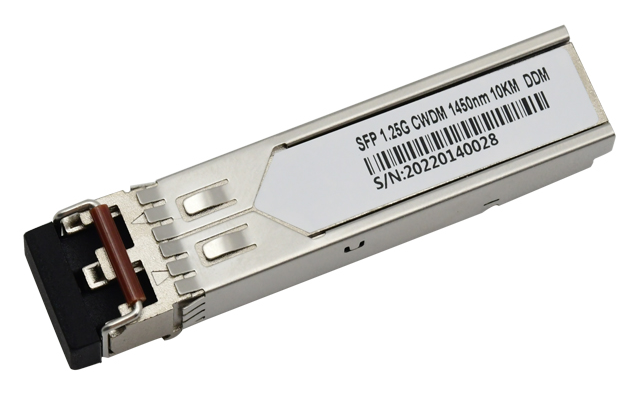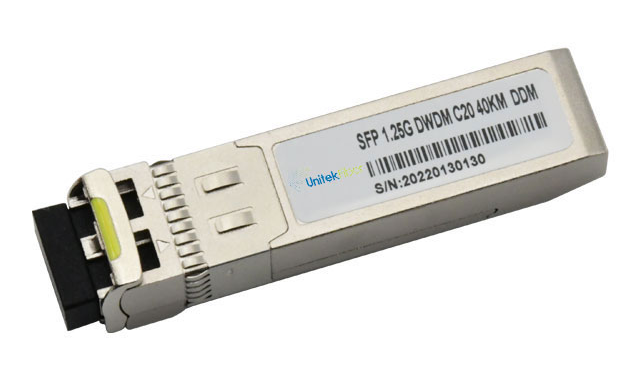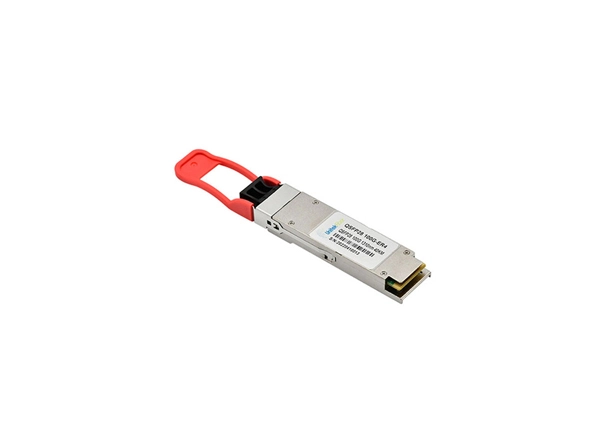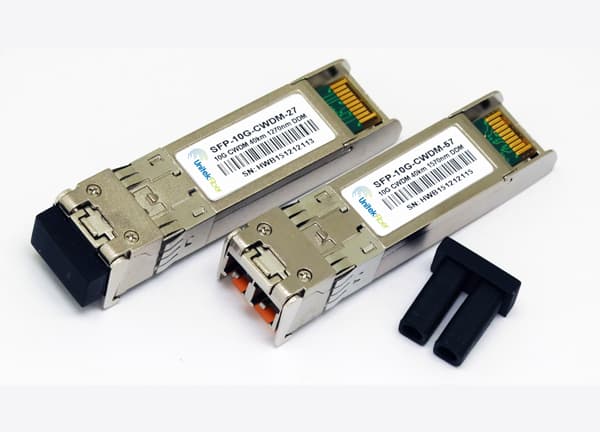
When considering the deployment of optical transceivers module in a fiber optic communication system, it is important to understand the differences between Coarse Wavelength Division Multiplexing (CWDM) and Dense Wavelength Division Multiplexing (DWDM) technologies. Both CWDM and DWDM optical transceivers module serve the purpose of increasing the capacity and efficiency of optical networks, but they do so in different ways and are suited for different applications.
CWDM Optical Transceiver
CWDM optical transceiver technology allows for the transmission of multiple wavelengths over a single optical fiber. The wave length of the CWDM optical transceiver is 1270-1610nm, the wave range spacing is 20nm, and 18 channels can be selected. CWDM optical transceivers utilize uncooled lasers, making them more cost-effective compared to the cooled lasers used in DWDM optical transceivers. CWDM optical transceiver is suitable for applications where the distance between network devices is relatively short, typically less than 80 kilometers. CWDM optical transceiver support data rates from 100 Mbps to 10 Gbps, corresponding to SFP, SFP+/XFP packaging types respectively.

DWDM Optical Transceiver
DWDM optical transceiver technology enables the simultaneous transmission of multiple channels over a single optical fiber. DWDM optical transceiver systems support a higher number of channels, often up to 80, operating in the 1528-1563 nm wavelength range, with each channel separated by a narrow 0.8 nm spacing. DWDM optical transceiver use cooled lasers, which provide greater power and stability but come at a higher cost. DWDM optical transceiver is commonly deployed in long-haul applications, where distances can exceed 80 kilometers. DWDM optical transceiver support data rates ranging from 2.5 Gbps to 25 Gbps.

The Difference Between CWDM and DWDM optical transceiver Applications
CWDM optical transceivers are commonly used in scenarios that require the transmission of multiple wavelengths over relatively short distances. Some specific applications include:
1. Data Center Interconnects: In data center environments, CWDM optical transceivers is utilized to connect servers, storage area networks, and other networking equipment within the same facility. CWDM optical transceivers allows for efficient utilization of fiber infrastructure and enables high-speed communication between different parts of the data center.
2. Local Area Networks (LAN): CWDM optical transceivers is deployed in campus and enterprise LAN environments where the distance between buildings or network nodes is moderate. CWDM optical transceivers supports the aggregation and transmission of multiple data streams over a single fiber optic cable, thereby optimizing the use of available fiber resources.
3. Metropolitan Area Networks (MAN): Within metropolitan areas, CWDM optical transceivers facilitates the interconnection of various network nodes, such as office buildings, academic institutions, and research centers. CWDM optical transceivers enables cost-effective and reliable data transmission over short to medium distances.
DWDM optical transceiver are designed for long-haul, high-capacity data transmission across extensive network infrastructures. Key applications of DWDM technology include:
1. Telecommunication Backbone Networks: DWDM optical transceiver systems form the backbone of telecommunications networks, enabling the transmission of vast amounts of data over intercity and international links. They support the seamless exchange of voice, data, and video traffic between major cities and regions.
2. Long-Distance Data Transport: DWDM optical transceiver is utilized for transmitting data over extended distances, such as transoceanic connections and cross-country network links. DWDM optical transceiver facilitates the efficient utilization of fiber optic resources and ensures high-speed connectivity between distant locations.
3. Enterprise Connectivity: Large enterprises with geographically dispersed facilities leverage DWDM technology to interconnect their offices, data centers, and remote sites. This enables the consolidation of data traffic and the provision of high-bandwidth connectivity for critical business applications.
Conclusion
CWDM and DWDM optical transceivers are both essential technologies in fiber optic communication systems. They enable multiple wavelengths to be transmitted over a single optical fiber, thereby increasing network capacity and reducing operational costs. However, the key difference between CWDM and DWDM optical transceiver is the channel separation, total bandwidth, laser type, and distance. Based on these factors, network operators can choose the appropriate technology that best suits their specific application requirements.
UnitekFiber is a leading professional fiber optic supplier that offers a comprehensive range of optical transceivers for various networking and data communication applications. We offer a diverse portfolio of products, including QSFP optical transceivers, SFP optical transceiver, CWDM optical transceivers and DWDM optical transceiver, designed to meet the evolving demands of modern data centers, telecommunications networks, and enterprise environments. If you have any inquiry about the optical transceiver module, fiber optical transceivers, please contact us by email at sales@unitekfiber.com.



